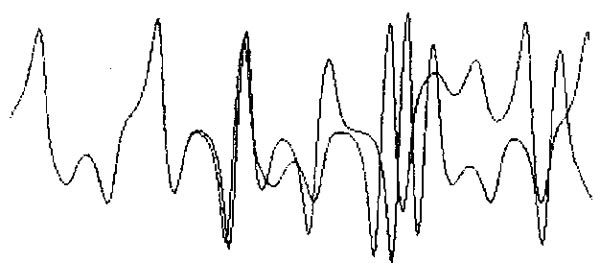Chaos!The Butterfly Effect
"For the want of a nail, the shoe was lost;
for the want of a shoe the horse was lost; and for the want of a horse the rider was lost, being overtaken and slain by the enemy, all for the want of care about a horseshoe nail." --Benjamin Franklin In this quote we see the fundamental lesson of Chaos Theory: that small changes at the beginning in a complex system can lead to dramatic differences in the outcome.
The idea of the Butterfly Effect is that the small act of a butterfly flapping its wings - in New Mexico - could contribute to the formation of a hurricane -
on the other side of the planet!
In 1961, meteorologist Edward Lorenz made an accidental discovery that would end up launching the field of Chaos Theory. This discovery lead to the
remarkable realization that deterministic systems, things that we used to think were predictable and reproducible can be very, very sensitve to small changes in the
system, making their long term behavior ultimately impossible to predict.
Lorenz made his revolutionary discovery while running a computer simulation trying to predict the dynamics of the atmosphere - that is, the underlying mechanisms
of weather. He created a system of three interconnected equations that describe three important attributes of the motion and temperature of air. Then he iterated the equation
to get the atmospheric conditions at the next time step. Those conditions were then fed back into the equations to get the conditions at the next time step.
He made his discovery when he found an interesting pattern in the data for certain starting conditions, and he ran the simulation with the same starting conditions...
and he got a totally different outcome! He was expecting to reproduce the same result, since his equations were deterministic, that is, not random, but reproducible.
The source of the difference turned out to be a rounding error in the last few digits of one of the input numbers. He had entered .506 instead of entering the full .506127
which had been the original starting value. He had assumed that such a small difference, or error, would not be significant, but would disappear in the calculations.
But instead of disappearing,the error grew from iteration to iteration until the result was totally different than the original answer.  Data showing Lorenz's original simulation results overlayed with the attempt to reproduce the same result. At first, the traces are similar, but after a few cycles they begin to differ and they are soon completely unrelated. This phenomenon is called Sensitivity to Initial Conditions and we have seen examples of this in the behavior of points near the edge of the Mandelbrot Set, and
in the fluctuation of populations simulated by the logistic function.
In all these systems the answers are deterministic and reproducible, not random. However, they can be extremely sensitive to small changes in the initial
conditions. This means that while in theory these kinds of systems are predictable, in practice, in the real world, we can never measure the conditions with perfect accuracy.
Any error will be amplified through the iterations.
What does this mean for predicting the weather? It means that no matter how powerful our computers, or how sophisticated our models, we will never be able to predict
the weather accurately more than a few days in the future. Basically, there will always be errors in our measurement of the current conditions, and these errors will grow until our predictions
become meaningless. The original errors are small and come from many sources - for instance because the
weather stations that take the measurements are spaced kilometers apart, to say nothing of the immeasurable effects of all the butterflies flapping!
|
|
<- PREVIOUS NEXT -> © Fractal Foundation. |